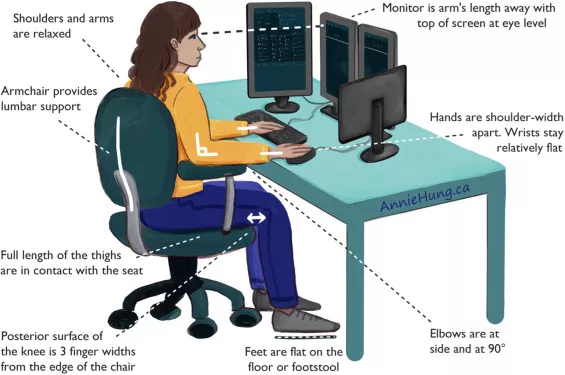For many radiologists, physical discomfort hinders productivity
A new study reports that nearly 80% of radiologists experience some sort of musculoskeletal pain while working.
While not life-threatening, authors of the new study maintain that this kind of discomfort is not without its consequences for radiologists who spend prolonged periods of time at their workstation.
“The implications are important as musculoskeletal discomfort may have detrimental effects, including impaired wellness and decreased productivity,” corresponding author Helena Bentley, MD, MSc, with the Department of Radiology at the University of British Columbia in Vancouver, and colleagues suggested.
Decreased productivity due to pain was one of several revelations uncovered when the experts assessed the responses to a musculoskeletal discomfort and ergonomics questionnaire they had distributed to radiologists and radiologist trainee members of the Canadian Association of Radiologists.
According to the 191 completed questionnaires, more than 90% of radiologists who self-reported musculoskeletal discomfort admitted their pain negatively affects their productivity at work.
Based on the responses, the authors surmised the radiologists’ musculoskeletal pain could likely be attributed to poor workstation ergonomics. The majority of respondents reported implementing some form of ergonomic safety, like keeping their monitors an arm's length away (82.6%) and their hands shoulder-width apart, but the absence of additional parameters was found to be associated with musculoskeletal pain.
Specifically, those who did not position the top of their monitor screen at eye level when in a seated position and those who did not keep their wrists straight and flat when using a mouse were more likely to report physical discomfort while at their workstation.
The authors suggested poor ergonomics could be the result of providers simply not being aware of the practice or benefits of such measures.
“Ergonomics interventions are multidimensional and may include ergonomics training in addition to the provision of improvements in ergonomics parameters,” the experts noted.
The authors suggested that ergonomics training would be appropriate for radiologists, especially given their growing workloads. They also offered suggestions on interventions that could improve workstation ergonomics, including having chairs, desks and monitors that provide adjustable heights.
The study abstract is available in Academic Radiology.


